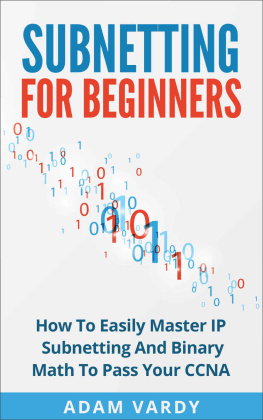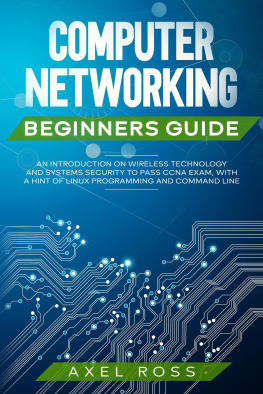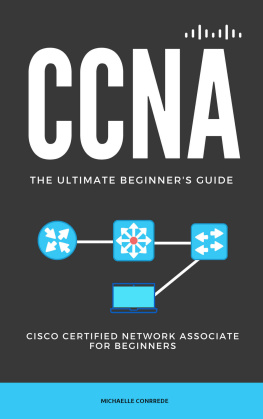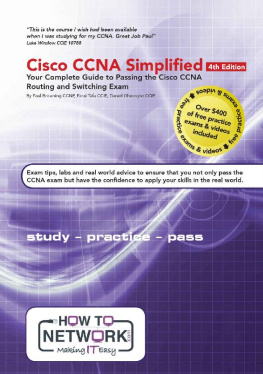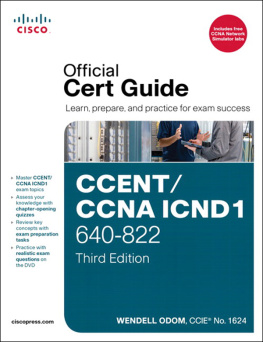Subnetting for Beginners :
How To Easily Master IP Subnetting And Binary Math To Pass Your CCNA
Copyright 2015 by Adam Vardy - All rights reserved.
This document is geared towards providing exact and reliable information in regards to the topic and issue covered. The publication is sold with the idea that the publisher is not required to render accounting, officially permitted, or otherwise, qualified services. If advice is necessary, legal or professional, a practiced individual in the profession should be ordered.
- From a Declaration of Principles which was accepted and approved equally by a Committee of the American Bar Association and a Committee of Publishers and Associations.
In no way is it legal to reproduce, duplicate, or transmit any part of this document in either electronic means or in printed format. Recording of this publication is strictly prohibited and any storage of this document is not allowed unless with written permission from the publisher. All rights reserved.
The information provided herein is stated to be truthful and consistent, in that any liability, in terms of inattention or otherwise, by any usage or abuse of any policies, processes, or directions contained within is the solitary and utter responsibility of the recipient reader. Under no circumstances will any legal responsibility or blame be held against the publisher for any reparation, damages, or monetary loss due to the information herein, either directly or indirectly.
Respective authors own all copyrights not held by the publisher.
The information herein is offered for informational purposes solely, and is universal as so. The presentation of the information is without contract or any type of guarantee assurance.
The trademarks that are used are without any consent, and the publication of the trademark is without permission or backing by the trademark owner. All trademarks and brands within this book are for clarifying purposes only and are the owned by the owners themselves, not affiliated with this document.
=
Contents
Introduction
I want to thank and congratulate you for purchasing the book Subnetting for Beginners
The Cisco CCNA exam is an IT Networking Certification Exam that tests what one knows about networking and switching. Part of the said exam is all about Subnetting, or the process of dividing identifier hosts to create subnets in the CIDR Notation Prefix.
It is an important part of the exam because it deals with IP addresses, which every device connected to a network has. With the help of this book, youll become familiar with Subnetting and get introduced to some activities and tests that will challenge your mind.
Should you choose to pursue your Cisco CCNA certification, when the day for the for your exam finally comes, youll be able to answer those questions with full conviction and with the best of your knowledge and abilities.
Read this book now and learn more about Subnetting.
Once again, thank you and good luck!
Chapter 1: Subnetting Refresher Course
Lets get started with the basics!
Subnetting Basics
Basically, Subnetting deals with the process of having to divide networks into two or more smaller networks to create IP Network Subdivisions. The computers that would then belong to those divisions, apparently called subnets, have bitgroups that are almost identical in their IP addresses. This way, IP addresses would be logically divided and their addresses would have routing prefixes, with host identifiers that has something to do with the whole network. In short, subnets refer to local organizations of connected network devices.
The CIDR Notation, or Classless Inter-Domain Routing, also known as the method of routing Internet Protocols and allocating IP Addresses, replaced classful networks back in 1993 as the means to divide networks.
Classful designs came with IPV4 (8-bit addresses), while classless networks began to be introduced with IPV 6 that has 64 bits per convention. This is also the reason why IPV4 addresses seem to work slower than IPV6 addresses.
Traffic then gets to be exchanged between the networks or router gateways, with the router acting as the physical communication item between the two. With the help of subnetting, network management and routing efficiencies become betterespecially in large organizations. Tree-routing structures also get to be partitioned, as well.
Please refer to the advantages of subnetting below.
Advantages of Subnetting
- Subnetting helps you save money by making sure that IP Range Requirements are reduced.
- Subnetting helps you apply network security policies when there is interaction between the subjects.
- Subnetting removes collision so traffic is reduced, and the overall performance of the network is improved.
- Subnetting breaks large networks down to smaller networks so they are easily managed.
How Do IP Addresses Work?
Now, its also essential that you lknow how IP Addresses work, and what makes them what they are.
For starters, IP Addresses can be likened to Postal Addresses. While it is a series of numbers, each division defines specific geographical areas. IP Addresses are made up of two major bits, namely, the network address or prefix , and the host identifier or the other numbers in the network. For example, the IP Address is something like this:
191.16.85.18
191 is the state of origin.
16 is the town.
38 is the house/apartment unit.
18 is the house/apartment number.
Intra-Subnets
Intra-Subnets are known as postal carrier switches where in the state of origin is considered domestic.
Lets say your IP Address is 192.168.8.1, but you sent something to 192.168.8.2. Obviously, what would happen is that the letter wont be able to reach the destination without the subnet mask. The mask acts as the messenger, and without it, your messages would just stay with youand that is not really what you want to happen.
Chapter 2: Constructing IP/TCP Addresses
When it comes to the construction of IP/TCP Addresses, you need to deal with binaries and other logical numbers. Lets break the said numbers down so youll easily understand them.
TCP/IP Addresses. These consist of the whole 32-bit binary numbers that have then been converted into decimals.
Binary. This is a number system that is based on zeroes and ones.
Bits. Bits are then the term given to single characters. This means that 32-bit is equal to 32 ones or zeroes.
Octet. As the name suggests, this is a group of 8 numbers. For example, if the IP Address is 192.168.1.1, the octets would be: 192, 168, 1, 1. Again, you have to keep in mind that were talking about binaries here, not real numbers, so 8 is also equivalent to 4.
Now, for example, you have the IP Address 191.54.38.15. You can then convert it into binary this way:
Binaries
It would be good to know the basics of binaries first. For this, you have to keep in mind the following:
0001 = 1
0011 = 3
0110 = 6
1001 = 9
Each 1 is the representation of the power of 2. And then 0, of course, also resembles zero. This means that:
1 is 0001 because it is 2 to the power of zero.
2 is 0010 because it is 2 raised to the 1 st power.
4 is 0100 because it is 2 raised to the 2 nd power.
8 is 1000 because it is 2 raised to the 3 rd power.
So basically, when you see 0101, it means that numbers have been raised to the power of 2. For this, you could keep in mind the following examples:
0 + 4 + 0 + 1 = 5 = 0101
8 + 0 + 2 + 0 = 10 = 1010
0 + 4 + 2 +1 = 7 = 0111

